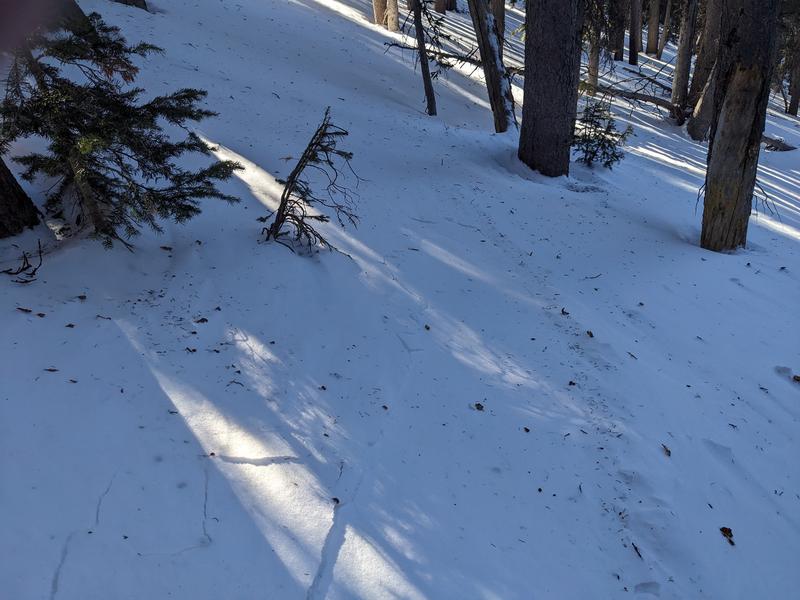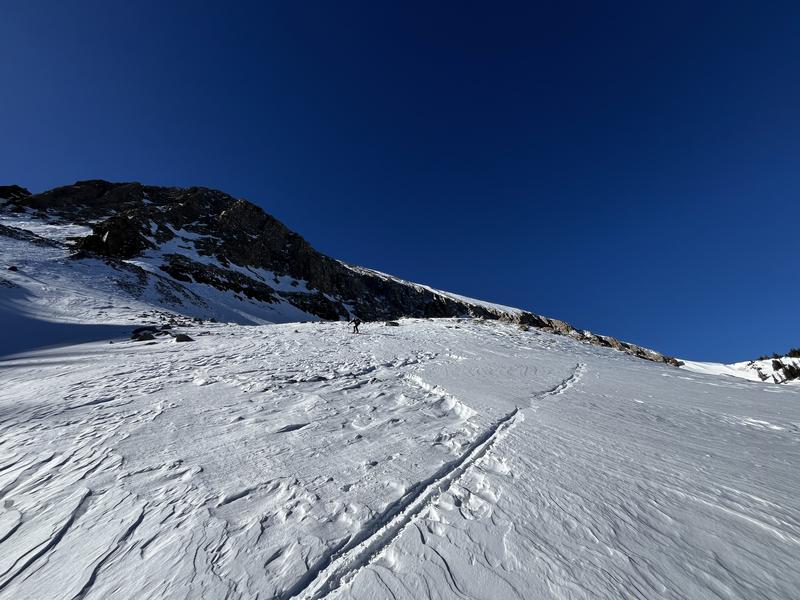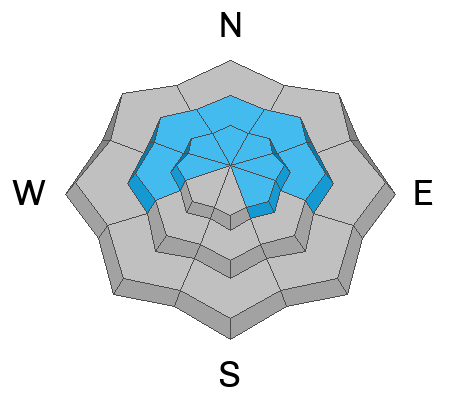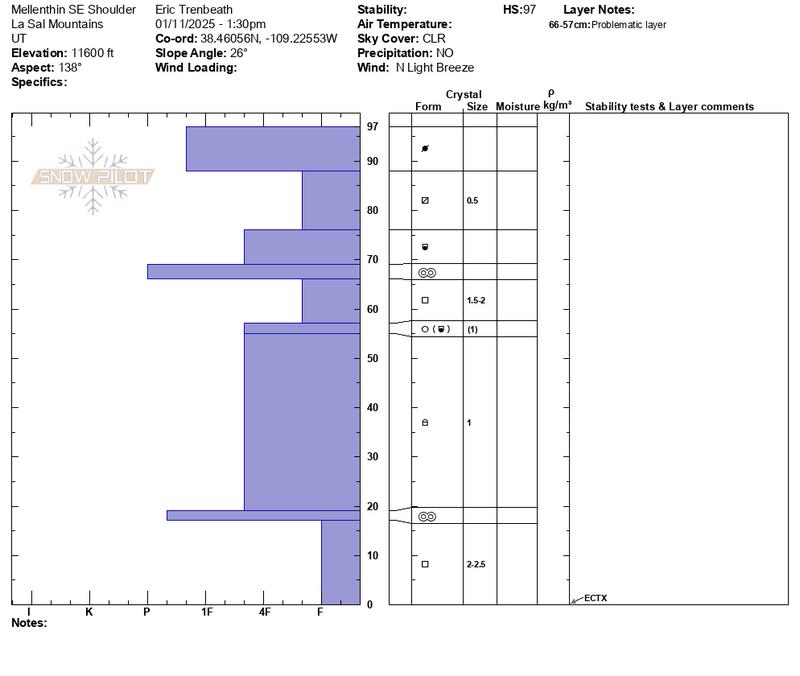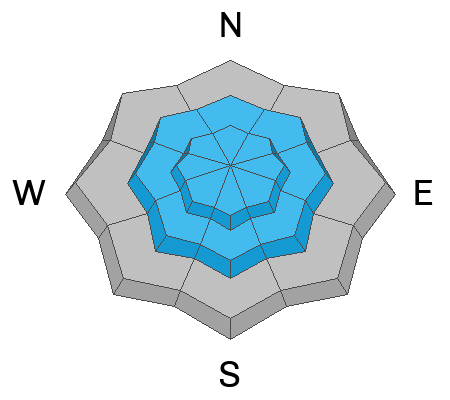Forecast for the Moab Area Mountains

Issued by Eric Trenbeath on
Saturday morning, January 11, 2025
Saturday morning, January 11, 2025
Strong northerly winds have deposited stiff, shallow wind slabs on all aspects near and above treeline and a MODERATE avalanche danger exists on steep slopes that have recent deposits of wind drifted snow.
The danger is greatest on steep slopes facing W-N-E-SE where recent slabs of wind drifted snow have increased the likelihood for human-triggered avalanches failing on a buried persistent weak layer. In these areas, human triggered avalanches a foot deep or more are possible.
An outlying possibility also exists for full depth avalanches failing on weak facets near the ground. Minimize this type of risk by avoiding thin slope margins and areas of rocky, radical, northerly facing terrain.
The danger is greatest on steep slopes facing W-N-E-SE where recent slabs of wind drifted snow have increased the likelihood for human-triggered avalanches failing on a buried persistent weak layer. In these areas, human triggered avalanches a foot deep or more are possible.
An outlying possibility also exists for full depth avalanches failing on weak facets near the ground. Minimize this type of risk by avoiding thin slope margins and areas of rocky, radical, northerly facing terrain.
Many slopes have thin cover and rocks, stumps, and logs are lurking just beneath the surface.
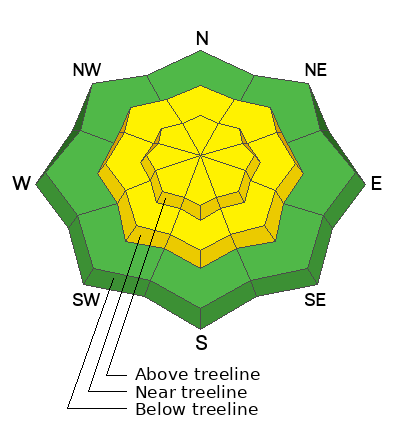
Low
Moderate
Considerable
High
Extreme
Learn how to read the forecast here


